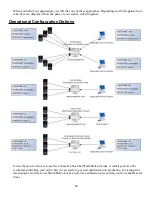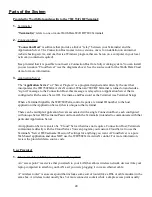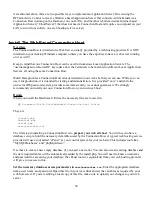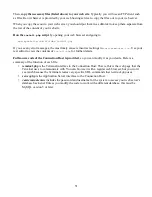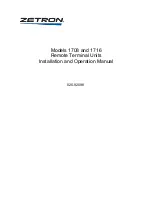
The dialog between 7802 RF Terminal and Application Host is established when a terminal connects to the
802.11 RF network. The host computer application waits until a terminal SIGNS ON, then begins its
processing by sending the first prompt out to the terminal via an Internet connection.
Logical
The easiest way to think of the logical architecture of the 7802 Terminal system is as a “spoked wheel” or a
“star”.
Connection Host with Local Application Server Model
Think of the center of the star as the Connection Host which serves to link all of the other pieces of your
system together. You may have several Application Servers and hundreds of Terminals all linked together by
a single Connection Host.
In fact, this is how the default Worth Data Connection Host works. It provides connectivity to many
different Application Servers and their associated Terminals while keeping everything organized and
properly connected.
For the 7802 Terminal system, all messages are initiated by the Terminal. The first signal is always a “Sign-
In” request sent to the Connection Host. The Connection Host queues the Terminals message and waits for
the Application Server to poll and ask if there are any messages waiting. The Connection Host replies to the
Application Server's poll by forwarding the Terminal's Sign-In request and waits for the Application Server's
reply which is forward to the calling Terminal when it is received. All of this happens in a fraction of a
second. The Terminal then closes its connection to the Connection Host, displays the prompt it just received,
and waits for the operator to collect some data. When the Terminal sends data to the Connection Host, the
cycle is repeated.
Web Based “Cloud” Application Server Model
(no Connection Host)
Think of the center of the star as the Web Application (“Cloud”) Server installed on your web site. All
Terminals link to your Web Application Server. You may have several Web Application Servers (just like
having multiple web sites) connecting hundreds of Terminals all running of one web host and central
database. You could also have one Web App Server controlling multiple sets of Terminals that sign in with
different identification key (username/password/serverID) combinations that control what that Terminal is
used for.
This is how the default Worth Data Web Application Server works. It provides connectivity to many
different users and their associated Terminals while controlling data access through the identification key
(username/password/serverID) combinations.
For the 7802 Terminal system, all messages are initiated by the Terminal. The first signal is always a “Sign-
In” request sent to the “Cloud” Application Server. The Application Server responds with prompts and data
collection control instructions for the Terminal and then waits for data from the Terminal. All of this
happens in a fraction of a second. The Terminal then closes its connection to the Application Server,
displays the prompt it just received, and waits for the operator to collect some data. When the Terminal
sends data to the Application Server, the cycle is repeated.
38























